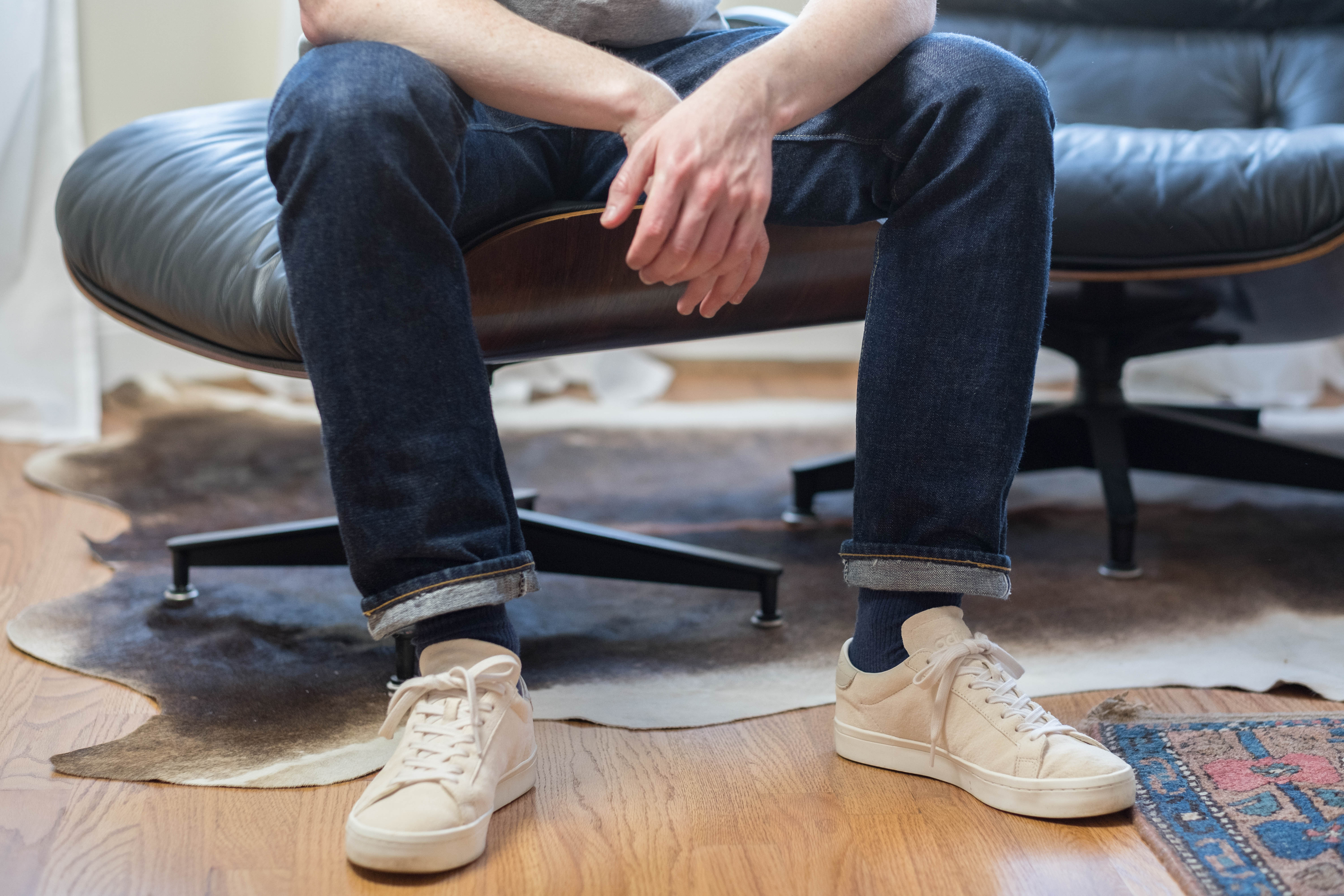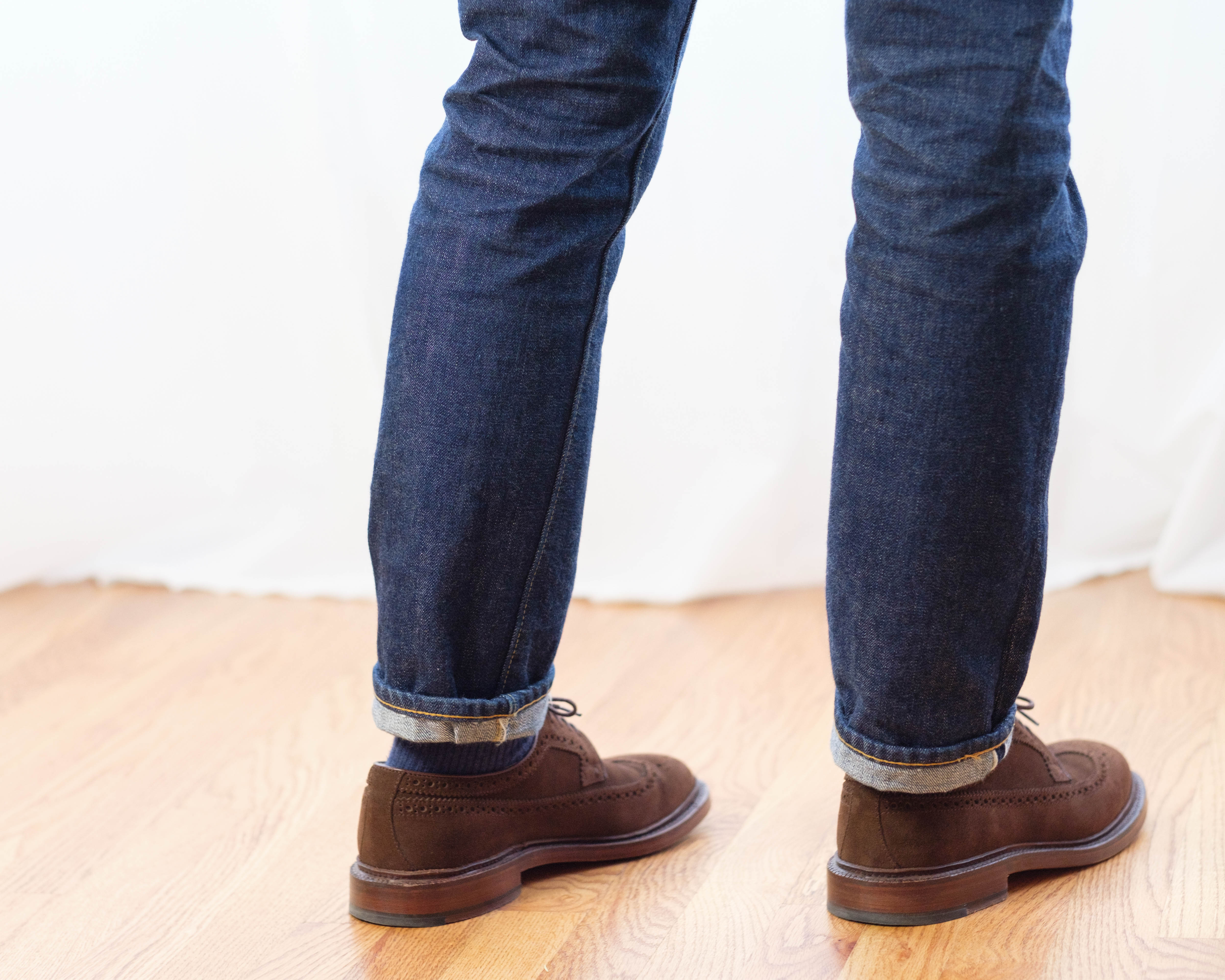“Trust me – wear them for a week or two and then they’ll fit perfectly.”
This is the bad advice that I’ve heeded and come to regret many times in the past decade – and I have a “shame stack” of virtually unworn jeans in my dresser to prove it. Although I like to wear jeans, I hate breaking in raw denim. Hate it. I just can’t get on board with buying something extremely uncomfortable and hoping that it will change after a month or two of suffering. For this reason I’ve been putting off purchasing a much-needed pair of jeans, but after learning more about OrSlow I decided that a pre-washed pair sounded like an excellent change of pace.
OrSlow’s 107 jeans have been some of the most highly lauded pairs out there for the past year or two, perhaps in part because people are beginning to move past the high-contrast-fades, 24-ounce, size-down-two-inches mentality of 5-10 years ago. OrSlow’s jeans are washed, have a zipper fly, and aren’t just about getting fades fast (although they do – more on that later). The combination of raw denim details with washed denim comfort seems to have made them a popular choice as of late. They’re also made in Japan using old-school manufacturing methods and local materials.
Of course, one of the most common reasons that people have been turning to OrSlow has been for the fit. OrSlow’s 107 has a rather uncommon but frequently desired cut that combines a moderately slim leg with a higher rise. This achieves a few things, the most important of which is that you can tuck a shirt into them and it will stay there. Aesthetically speaking, the higher rise and slim leg make them a better candidate for dressing up with a sportcoat as well. I’m always looking to maximize versatility, so these have been on my short list for a while.
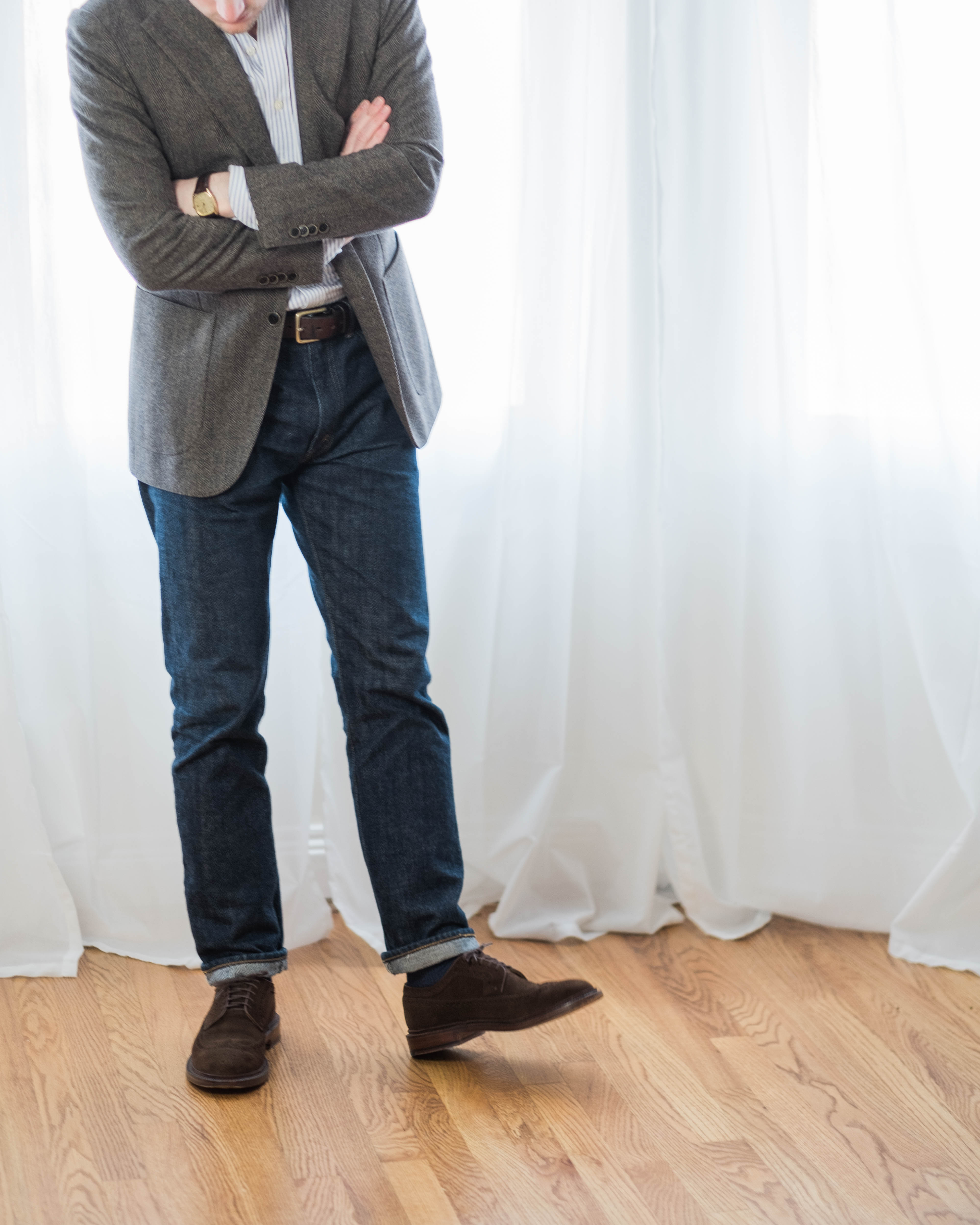
Sizing is a bit complex (and limited) with OrSlow denim, and I doubt that I have all the answers to make it clearer. Like many Japanese brands, OrSlow uses their own sizing rubric that goes from 1 to 5 – 1 is a Japanese small / US XS, 2 is a Japanese medium / US small, etc. It sounds like most people equate size 1 to a standard 28 waist, 2 to a 30, and so forth. In reality, I found them to fit a bit bigger than that. I normally wear a size 31, and a OrSlow 2 is about right, perhaps a touch roomy on me. If I were a slim 32 I could probably wear these with no problem. So I’d roughly say that it’s best to go “true to size,” but if you’re in between the even sizes or have any uncertainty, then size down. The best thing to do would be to try them on in person or order from somewhere that has free returns.
Overall, I’d say the fit is good, and keep in mind that I have trouble finding pants that fit well. My legs are rather slim for my waist size (something I’m actively working on improving in the gym), so I’m not an ideal fit model by any means. I think that for someone of normal build, these jeans will be flattering in the leg without being super tight, and give enough of a rise to be able to tuck a shirt in and look a bit more polished. I’ve heard these described as skinny jeans in the leg, but that’s not how they seem to me. I’d say they are somewhat slim, with just a mild taper to the ankle – and this is exactly what I like. For comparison, the leg of my size 2 OrSlows is nearly identical to my size 30 A.P.C. New Standards, and somewhere between 3Sixteen’s popular SL-100 and ST-100 fits.
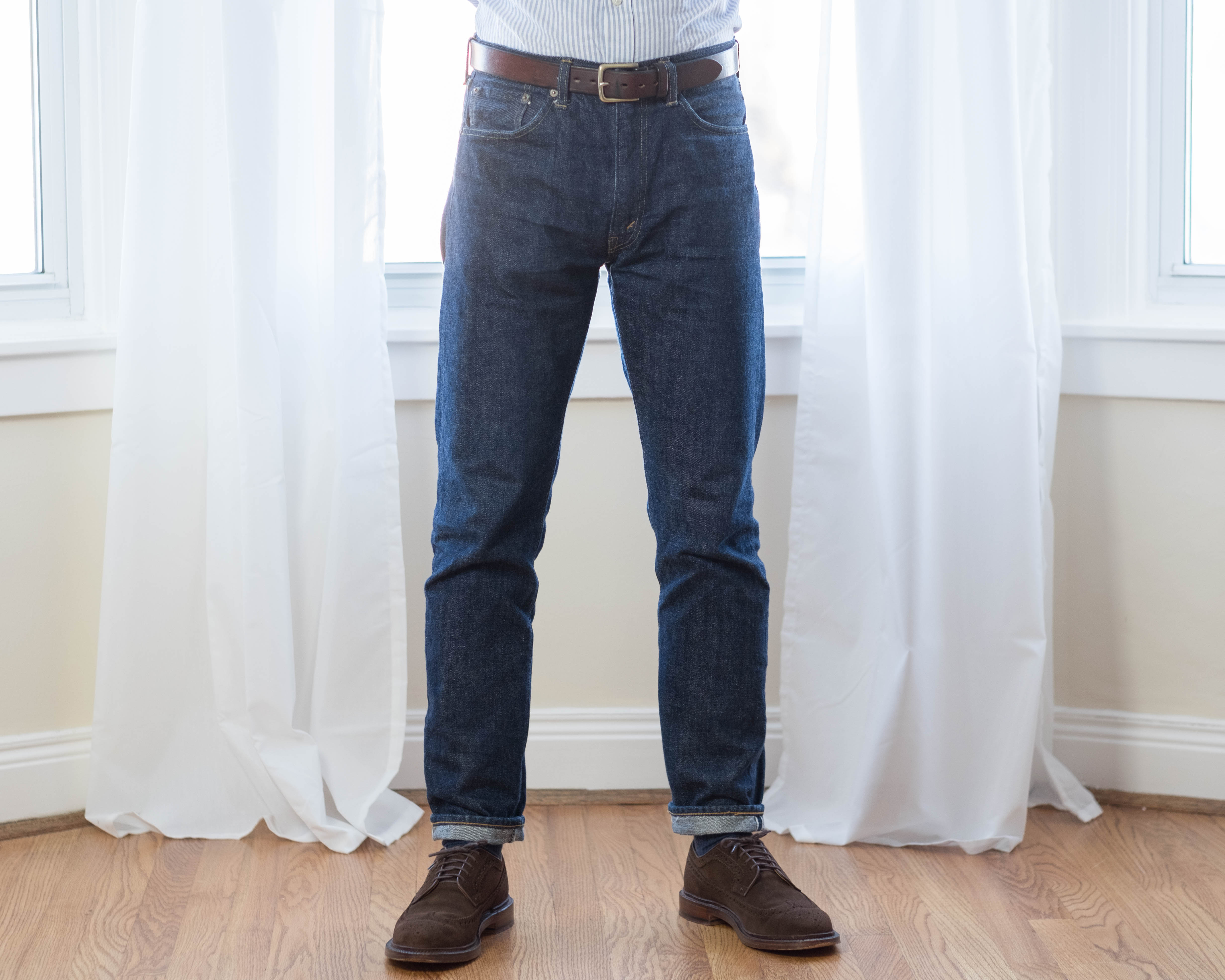
Also, note that these have an inseam much shorter than most – unlike most selvage denim on the market, these don’t come with a long inseam that’s meant to be hemmed or stacked. OrSlow designers very much wanted these to be worn with a cropped, Ivy-style look and hemmed them to fit that aesthetic (and also to fit the Japanese market). This works out great for me – the unhemmed length gives me just a slight break, and if I want to have a small cuff it gives me a nice no break look – but it will be a dealbreaker for many American-sized customers. My pair has a 30.5″ inseam – most American pants have inseams that START at 30″ or even longer, so for these to end around that length will make them a non-starter for many. Good news for me and many under-served short men, bad news for those over six feet or so.
Now, there’s one more big thing that I’d like to discuss regarding these jeans, and I think it ties into a bigger discussion regarding authenticity versus quality. When I received my first pair (I ordered them from Mr. Porter), I sent them back immediately because there was some serious leg twist on the left leg. For those that don’t know, leg twist occurs sometimes when unsanforized denim is washed and shrinks unevenly. Whether or not this is a quality control issue is a bit complicated – some see it as the true nature of authentic denim expressing itself, others as an aesthetic bummer. The twist on that first pair was almost 90 degrees, so it was significant enough that I felt it warranted an exchange. When they sent over a second pair, I pulled them out and laughed – these had just as much leg twist as the first pair. Back they went. When I got my third pair and saw the same thing, it finally dawned on me that this was not a fluke – it was the norm.

All told, at this point I’ve examined six pairs of OrSlow 107s in a variety of stores and all of them had significant leg twist in the left leg only. The more I looked, the more I saw – left leg twist everywhere. Again, this is something that naturally occurs in unsanforized denim, but at a certain point you have to ask yourself – when does this go from a bit of wabi-sabi character to a serious quality control issue? Not only does having a seam run crooked down your leg create an aesthetic issue, but it’s also less comfortable. Plus, these are $300 jeans – what does it say about the brand when just about any other pair of jeans on the market at any price won’t have this problem?
With all that said, there’s lots of good stuff to say about this denim – it’s a comfortable 13.5 oz, a bit slubby, a bit hairy, and I’ve found it to fade super fast (I started to get whiskers and honeycombs after a couple of weeks). It’s made exclusively for OrSlow, and I have no doubt that they put a lot of effort into designing it. It’s just a shame that they couldn’t find something that would behave a bit better to put in these premium-priced jeans.
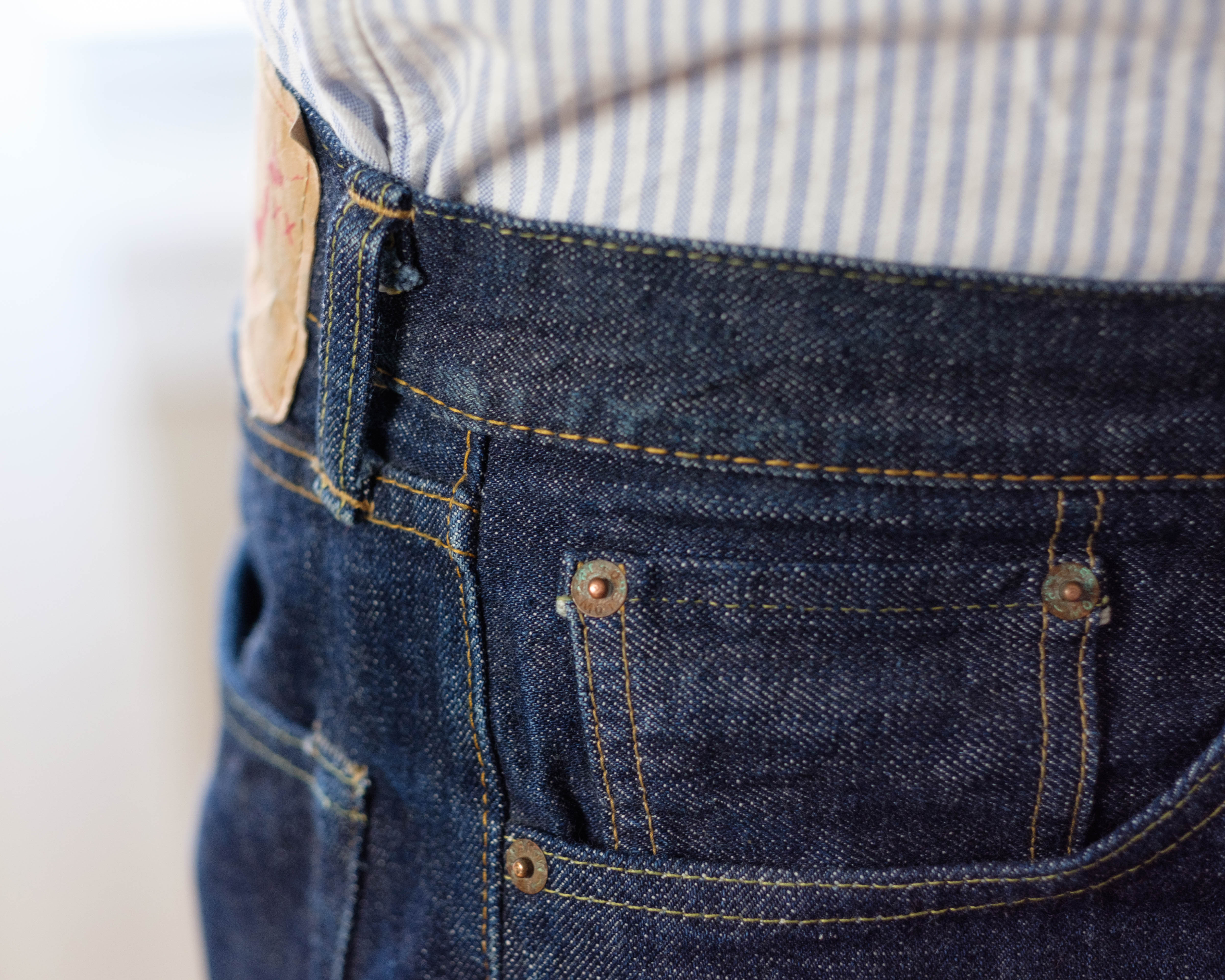
It’s possible that the twisty-ness of the fabric is a design decision, although if that’s the case then it’s certainly not included in any of the product copy anywhere. OrSlow definitely makes a few design decisions that place authenticity over quality, so it seems like this is possible. The best example is the patch on the back – objectively speaking, it’s quite bad. It’s cardboard, and most jeans at this price would have a nice piece of leather or something like that. But it’s by design – these are modeled after a 1966 pair of Levi’s, and at that time Levis used cardboard patches too (to save on costs, as you might expect). So again, it’s not a bad design choice at all, just one that puts historical accuracy over other factors.
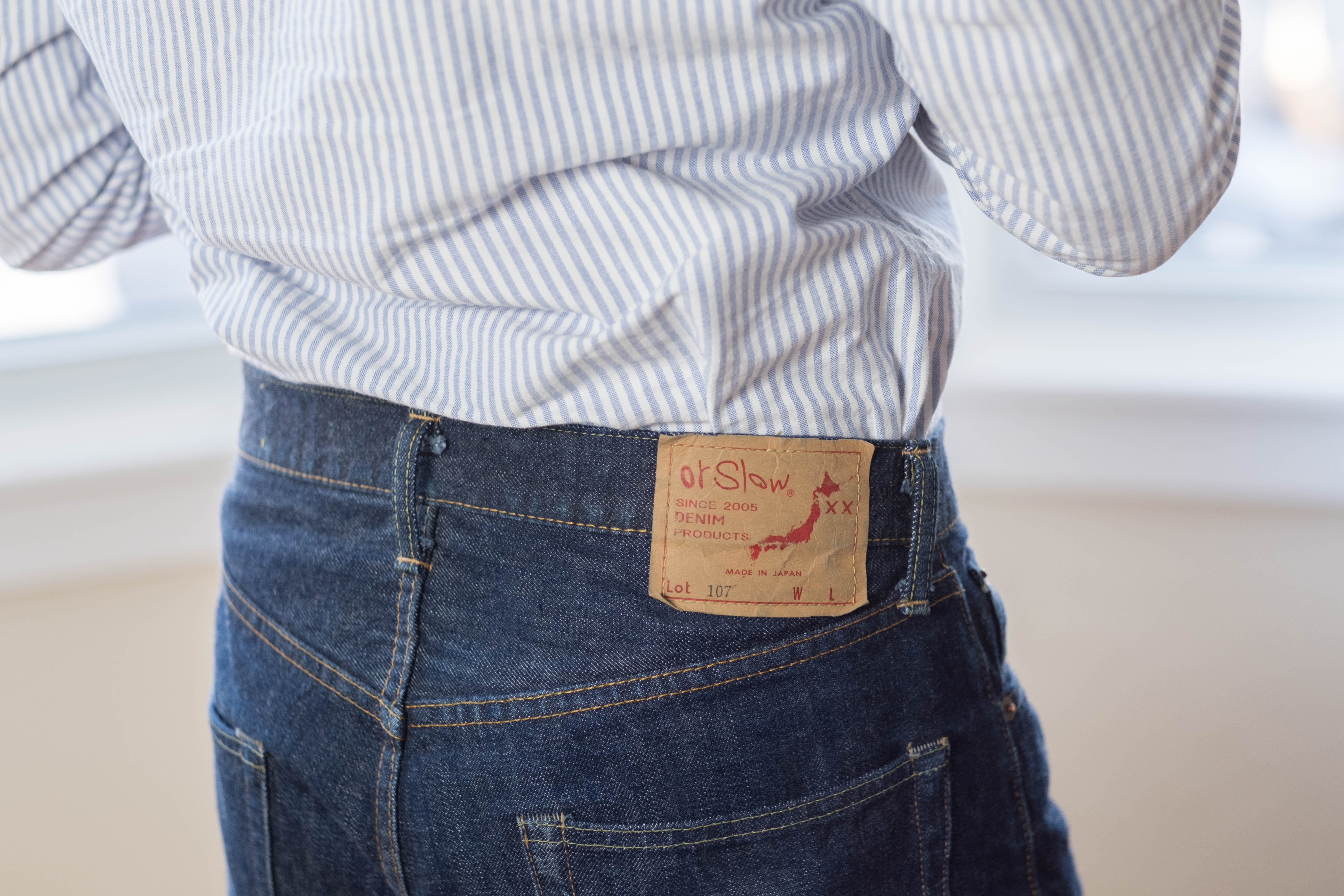
Just for clarity, I do like these jeans and I wear them frequently. I think it really comes down to what you’re looking for at the end of the day – if you are looking for a pair of dark jeans with a high rise and slim leg so that you can dress them up with a sportcoat, these are a solid option but they might not be the best. The twisty denim, cardboard patch, large back pockets and oxidized copper hardware make them lean a bit more workwear than dressy. For something that will look great dressed up, check out Drake’s jeans made by Blackhorse Lane – they are designed to be a bit more elevated in terms of formality. But if you’re looking for jeans that have a similar fit but with more interesting denim, authentic details, and some Japanese flair, these are a great choice. Ultimately, if you’re planning on spending north of $250 on jeans then you’ll have a lot of excellent options – it’s up to you to decide what details are most important.
